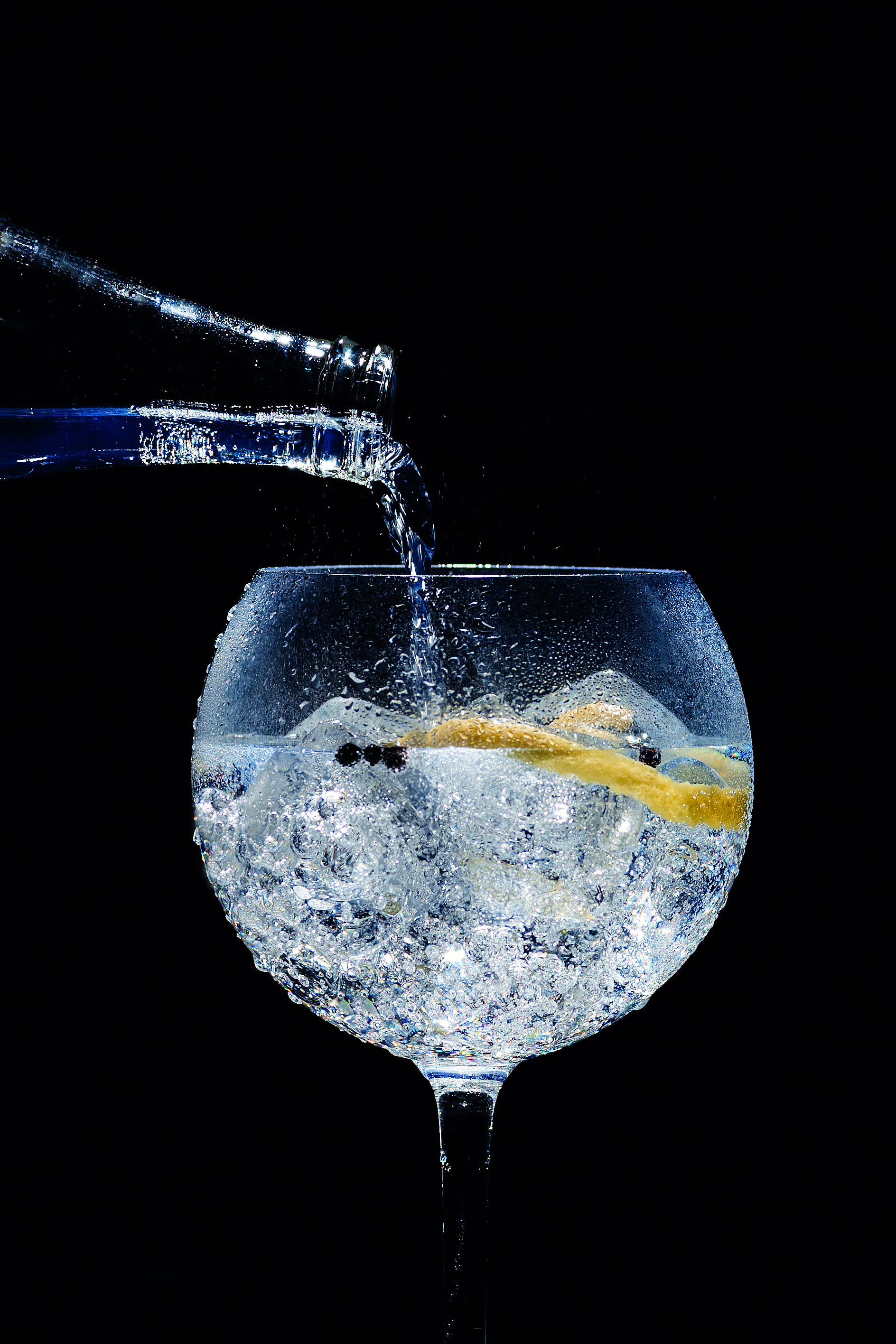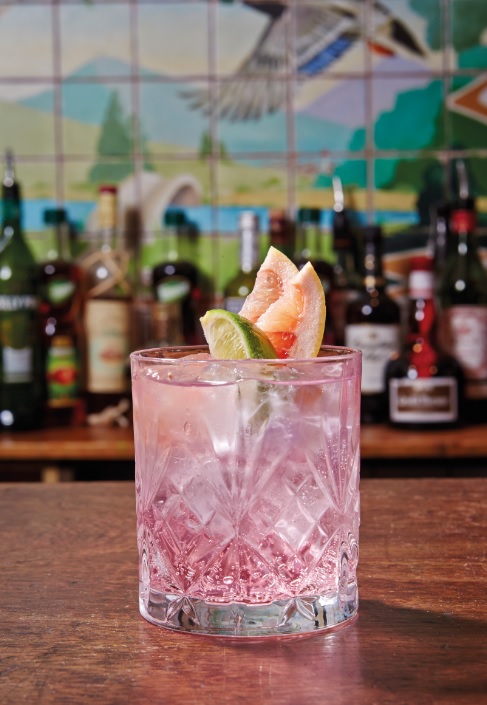
Putting the fizz into gin
If you’re after a quality mixer with authentic ingredients, tonic’s your answer. Tracy West reports
___________________________________
FEVER-TREE IS CURRENTLY THE DARLING of the tonic world. Not only did it top our World’s 50 Best Bars Best Selling Brands table for tonics but it’s got the money men excited with its first full financial year’s 71% jump in revenues. Then there’s the small matter of deals to supply Marks & Spencer, BA and Easyjet.
The company’s international director, John Moreira, puts the brand’s success down to the fact that there is no compromise on taste.
“We go to the ends of the earth to source the finest natural ingredients to craft mixers that enhance the taste of spirits rather than mask them,” he says. “Simply put, a mixer should not overpower, but rather allow a spirit to shine through in a drink. Artificial flavours and sweeteners are overpowering and cloying and unfortunately present in lots of mixer options, but at Fever-Tree we only use all-natural ingredients.”
He adds that from the many consumer taste tests the company has run, it’s clear people can tell the difference. “It stands to reason that bartenders and consumers alike want the best mixer possible, as people are now more aware of the quality and provenance of what they are consuming.”
Fever-Tree may be flying but it has plenty of competition from other brands boasting about the quality of their ingredients. Take 1724, for example. Juan Carlos Maroto, marketing director at brand owner Vantguard, says you can really taste the difference between 1724 and other tonics because the quinine in it comes from Peru and is less bitter than quinine from India or Africa.
He describes the carbonation as “much more elegant” than others, saying it is as delicate and soft as a champagne. Then there are the citric essential oils, which are different too because 1724 uses mandarins to give the drink a “very different personality”.
Le Tribute tonic water, which launches this month in the UK, Belgium, Spain and Italy, gets its quinine from Loja in Ecuador.
Legend has it a countess there, way back in 1639, discovered the healing effects of quinine, made the remedy available to others and it went on to find favour with kings, thus the brand’s marketing line: ‘Le Tribute tonic water: the remedy for the people and the kings.’
Meanwhile, Q tonic is made with handpicked quinine from the Peruvian Andes, uses organic agave as the sweetener and contains 60% fewer calories than regular tonic water. The latter is important when you consider that some high-sugar tonics are likely to be included in the proposed UK sugar tax. Interestingly, the bottles of Q tonic are said to be “perfectly proportioned for one proper drink”.
A tonic that’s going down a storm stateside is Bradley’s Kina Tonic, which is made from whole spices, real citrus oil and exclusively imported Peruvian cinchona bark. This tonic really is ‘old school’ as it is packaged in a concentrated form just like in the old days. To use it to make a G&T, you have to blend it with seltzer or club soda to make a balanced tonic water.
You might think some of this is a bit over the top for a simple tonic, but in its recently launched Soft Drinks Review, Britvic pointed to a trend for “more discerning drink experiences” where consumer demand for premium spirits was leading to a growth in sales of premium mixers that deliver “high taste and quality credentials”. And generally mixers are faring well in the UK licensed sector, worth £305m last year, which is up 11% on the previous year. And it looks like the trend will continue as cocktails are set to account for 10% of all spirit sales in licensed outlets by 2020 (CGA data). Britvic’s report states: “As well as creating inspiring non-alcoholic cocktails, when paired with alcohol, a good quality mixer will make all the difference to the final taste and the overall drinking experience”.
One tonic with an impressive past is Schweppes, which is undergoing a relaunch. New-look 20cl bottles have black labels which demonstrate its heritage as the “creator of bubbles since 1783”. Brand owner Coca-Cola Enterprises says the new design includes adult wit to appeal to consumers aged 30-plus who are looking for brands to suit their lifestyles. Support for the relaunch comes from out-of-home and cinema advertising as well as a marketing and digital campaign. CCE says this is just the first in a series of investments planned for Schweppes in 2016 and promises that it will be the brand’s biggest campaign in 20 years.
Of course, not every tonic water has such an historic past as Schweppes. Fentimans tonic roots go back to 2007 after the company was approached by Famous Grouse to provide a mixer for its whisky. Fentimans came up with a ginger beer in a 12.5cl mixer size, but the partnership never developed so the company was left with mixer size stock, which prompted it to develop its tonic and the rest of the mixer range.
Jaala Pickering, event marketing manager at Fentimans, says a perfect serve is created by working to complement the botanicals used in the gin and those used in the tonic and even taking into account the garnish, but she says it will always come down to personal preference. “Boodles gin works perfectly with our tonic, but it can easily become too citrus in flavour for some if garnished with lemon.”
PERFECT SERVE
At Fever-Tree, Moreira agrees that the perfect G&T is a matter of opinion.
“Our recent developments in flavoured tonic options have helped to make the G&T more accessible and Fever-Tree’s extensive tonic range offers an option for everyone, meaning anyone can find their own unique perfect serve. Our elderflower tonic is sweet and floral, for example, while our Mediterranean tonic is herbaceous and crisp.
“We develop G&T menus with different establishments and bartenders, so the choices really are endless and operators can provide a bespoke service to suit every customer. We have been presenting our G&Ts in large copa glasses, taking inspiration from the traditional Spanish serve, and we find this to be both celebratory and simple.”
The Berlin-based Thomas Henry brand prides itself on its bitterness, due to its quinine content being higher than most other tonics on the market.
International brand manager Linda Wedemeier, says that since a tonic is supposed to be bitter, many consumers and bartenders prefer to use Thomas Henry in their G&Ts.
“The most important thing for a G&T is to use a good gin, to which we recommend adding our tonic water and an appropriate garnish. Some gins work better with a lemon zest, others with a lime wedge or a sprig of thyme.”
Wedemeier says it’s vital to keep a close eye on mixologists around the globe. “We are only satisfied if the bartenders are. We continue to set trends as we’ve done with our elderflower and cherry blossom tonics, both of which were developed because bartenders asked for them.”
The G&T is one of the most famous serves going but Moreira says with the many different botanical and flavour make-ups of the new gins on the market Fever-Tree is seeing opportunities to develop variations on gin cocktails. He points to the Gin Buck, a classic cocktail that swaps out the tonic for ginger ale, adding a fiery flavour that’s ideal for the colder months.
This is obviously a trend that’s catching on as Pickering says gin and Fentimans ginger ale is becoming increasingly popular, as are gin and rose lemonade and gin and elderflower.
And Britvic reckons that the ginseng from its Purdey’s drink mixes well with the juniper berry of gin to create a “unique, fruity spicy flavour”. It also recommends mixing its pink grapefruit Teisseire cocktail syrup with gin and tonic to make a Gin Blush and its raspberry flavoured syrup to make a Framboise Fizz.
Back to tonic and Moreira says he is seeing Fever-Tree tonic mixed with a wide range of other spirits too. “Tequila and tonic in Mexico, white port and tonic in Portugal, and vermouth and tonic in Italy have all become increasingly popular in recent years.”
Fever-Tree now exports to more than 50 countries. Moreira says that, while there has always been a huge gin market in Spain and the US, there are exciting developments in Belgium, The Netherlands and Germany, and as far afield as Australia and Canada.
“The Gin Tonica, served in huge balloon glasses with special garnishes began in Spain and we’ve seen the trend picked up across Europe and other countries worldwide. A G&T is quintessentially British as we’ve been drinking it for centuries, but there is still lots of potential in America and other markets.”
Meanwhile, Fentimans now distributes to 65 countries worldwide, with the strongest markets for tonic being Belgium, the US and Austria. And 1724 is now available in the US where Maroto says feedback has been amazing. You can’t help but think, therefore, that these new-age tonics have been a real – er – ‘tonic’ for the traditional mixers market.
